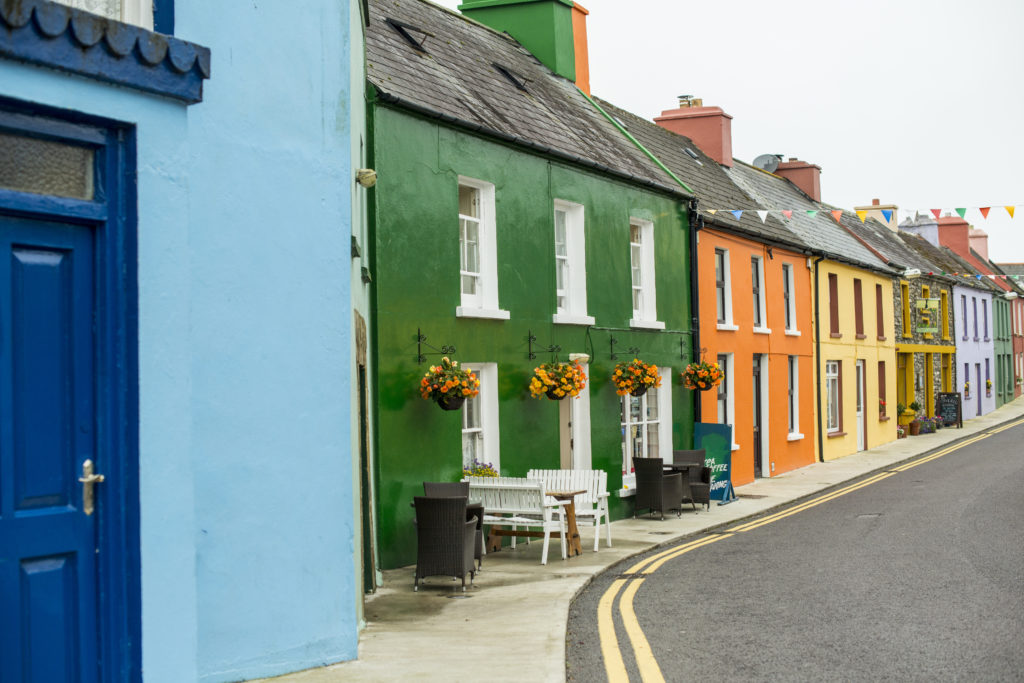
Site and soil
Plums and cherries are closely related, have similar requirements and similar problems. Both kinds flower early; plums a little early before cherries. This means that they must have a warm site. Do not plant where cold winds might damage the blossoms, or where cold, frosty air might collect. Plums and sour cherries can be grown on a west, south or north-facing wall.
Both plums and cherries like fairly heavy, limy soil, but it must be well drained. Acid soils should have lime applied before planting these fruits. Remove all weeds from the planting site and dig over an area of about one square metre before digging out a hole and planting to the level of the soil mark on the stem.
Varieties
The best and most reliable plum variety is 'Victoria'. 'Opal' is a reasonably reliable variety too. 'Czar' is a small black plum, and 'Denniston's Superb' is a greenish-yellow gage of good flavour. All of these are self-fertile, needing no pollinator. 'Victoria' and 'Czar' can be grown as free-standing trees or as fans on a south, west or north wall. 'Denniston's Superb' is best grown on a south or west wall. Plum varieties are grafted onto 'Pixy', a dwarfing variety.
The best sour cherry variety is 'Morello' which can be grown as a tree or a wall-trained fan. The only variety of sweet cherry suitable for gardens is 'Stella' a recent introduction. Other sweet cherries are too large, and need pollinators. Both 'Morello' and 'Stella' can be grown on their own, usually grafted on the 'Colt' rootstock, which is quite vigorous.
Training and Pruning
Plums and cherries can be grown as trees or wall-trained fans. Of the restricted shapes only the radiating fan shape is suitable for the growth habit of plums and cherries. Train wall trees into a fan shape by tying in the young shoots as they grow and pruning out badly-placed shoots.
'Victoria' is too vigorous as a wall tree, unless there is a lot of space available. Train plums and cherries as free-standing trees by shortening the young shoots by about one-third of the length, each April for the first few years, letting the trees take their own shape.
Plums or cherries must not be pruned in winter because there is a good chance of diseases getting in through the wounds. Prune plums in spring in the early years and , once established, prune after fruiting. Plums fruit on wood of all ages, and so, some thinning, and the removal of dead, damaged and diseased wood is all that is necessary.
Sour cherries fruit on the previous year's wood so, each year, some old shoots should be removed in late spring, to encourage new growth. Sweet cherries fruit on spurs on old wood. Little or no pruning of free-standing trees is necessary. Wall trees should have new shoots shortened to 10 centimetres in July, once the branch framework is established.
Feeding
If the trees are growing vigorously and failing to crop, they need no feeding for a year or two. After the fist two years, give 30 grams of sulphate of potash per square metre in March. If the trees have cropped heavily or growth is not good, give 70 grams of general fertiliser per square metre. Well rotted compost or manure could be used on poorly growing trees too. On very acid soils, apply some lime every three or four years.
Thinning and Picking
Plum trees, especially 'Victoria', often set too many fruits - even to the point of breaking branches. If too much fruit is allowed to develop, it tends to be small and of poor quality. Thin out plums to about 5 centimetres apart in late June. Wait until the natural fall is complete. No thinning is needed for cherries.
Pick plums and cherries ripe off the tree and use them within a few days, they keep for only a short time. Remove all the fruit from plum trees, because the old, withered fruit can be a source of disease the following year.
Weeds, pests and diseases
Use Weedol or Roundup to kill off weeds under plums and cherries. Hoeing, or Simazine, may damage the surface roots. Established plum trees and sweet cherries grow happily in grass.
- Greenflies usually attack plums and blackfly attacks cherries, each year. Keep a close watch and spray if numbers begin to build up. Plum sawfly grubs bore into the fruit making them fall early. Treatment is to destroy the early ripening, affected fruits and destroy fallen fruits. Spraying with a contact with Malathion or similar can be carried out in June and early July.
- Bullfinches often strip out the flower buds on plums and cherries in rural areas. The crop can be badly affected. Netting may be necessary. Blackbirds and starlings may attack ripe cherries. Netting can be considered.
- Silver leaf causes a silvering of the leaves, and a dark stain in the wood of the affected twigs. If the stain is not present, feeding usually restores the tree. If it is present, remove the affected branches completely as soon as they are noticed, as the disease is a killer.
- Bacterial canker affects the trunk and main branches, causing off-colour, shothole of the leaves, wilting and death of the tree, often during winter. Copious amounts of gum usually oozes from an infected tree. There is no cure. Both silver leaf and bacterial canker attack through wounds and pruning cuts. Do not prune in winter. Apply Liquid Copper, Dithane or Bordeaux Mixture at leaf-fall as a precaution - especially in wet localities.
- Brown rot attacks plums and, occasionally, cherries. The fruit turns brown, with creamy white spots. Do not leave any old fruit on the trees over winter as it will be a source of infection the following year.






